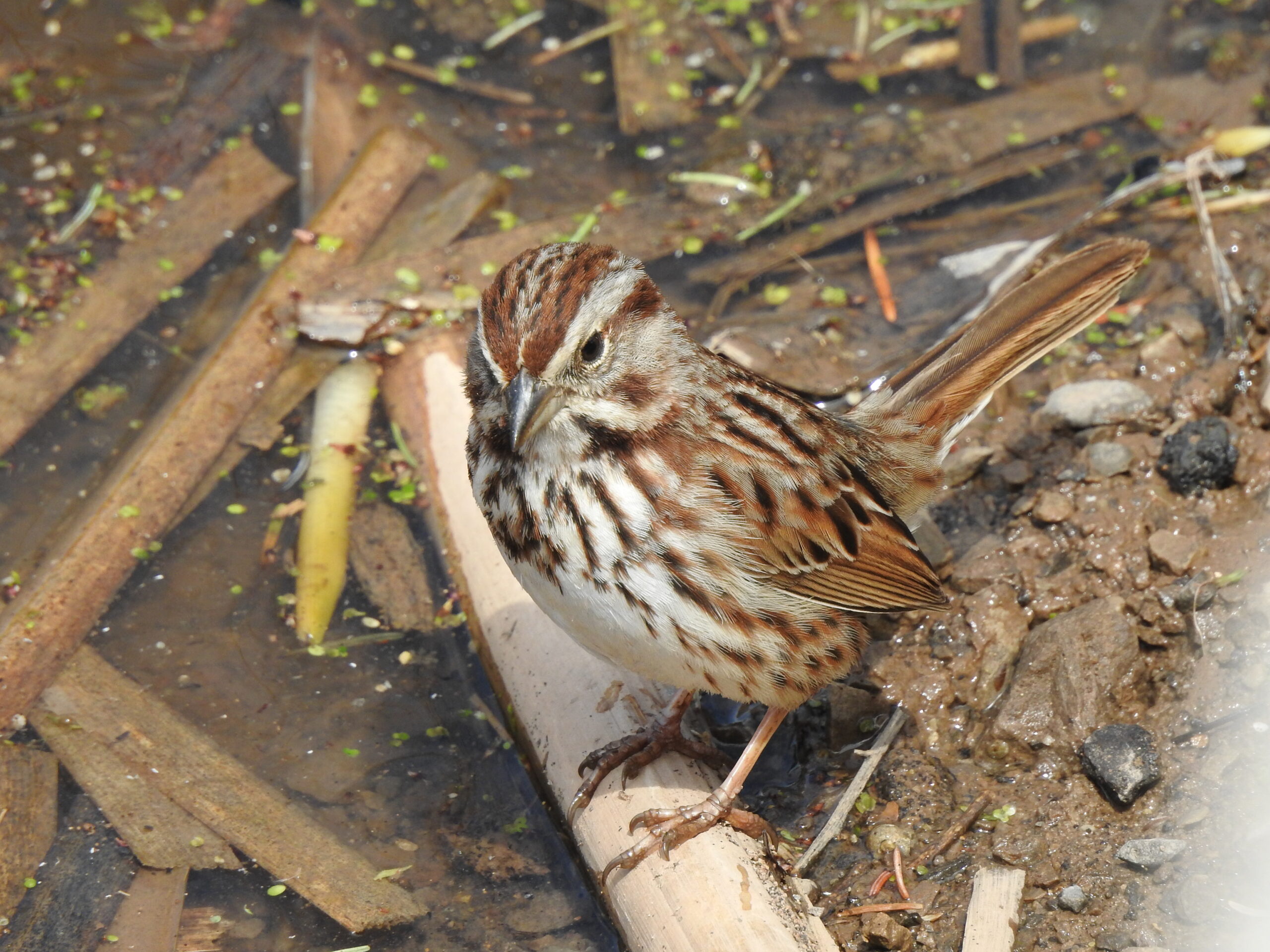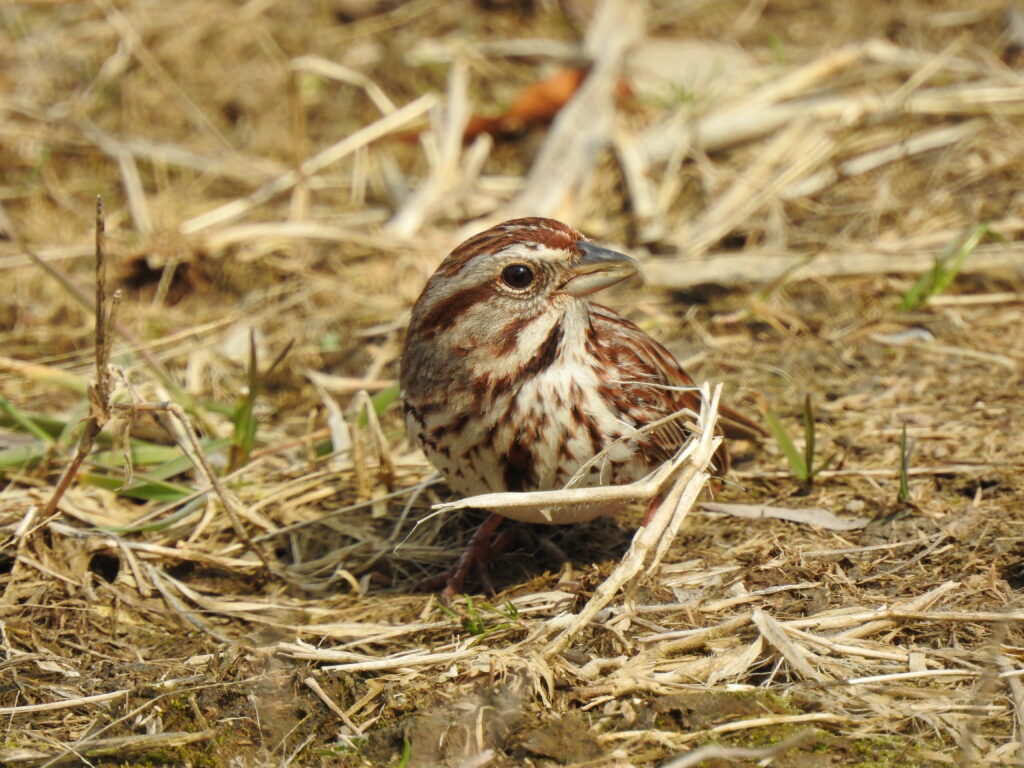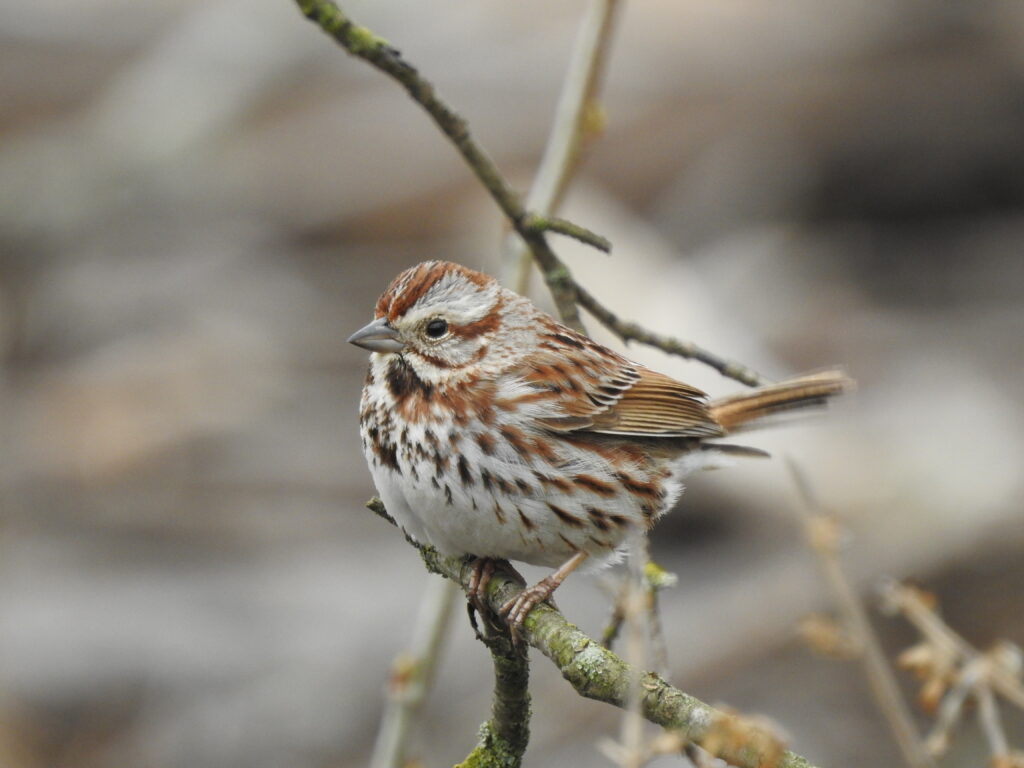By Lydia Balogh
Related paper: Haemosporidian infection prevalence varies temporally and spatially and Leucocytozoon infections are male biased in Song Sparrows: La prévalence des hémosporidioses varie dans le temps et l’espace et les infections à Leucocytozoon sont biaisées en faveur des mâles chez Melospiza melodia by Leanne A. Grieves, Lydia Balogh, Tosha R. Kelly, Elizabeth A. MacDougall-Shackleton, Ornithology.
Haemosporidia are widespread disease-causing blood parasites that infect most of the world’s bird species. There are three main genera of haemosporidian parasites that cause malaria and malaria-like diseases: Plasmodium, Haemoproteus, and Leucocytozoon. Birds that survive infection with these parasites can suffer negative effects on their reproductive success, immune function, and lifespan. Haemosporidian infection prevalence is affected by a variety of factors, including environmental variation and variation in host traits, so we investigated infection prevalence across time, space, age, and sex in Song Sparrows (Melospiza melodia melodia).
My study used blood from more than 300 Song Sparrows captured at two locations in Ontario, Canada, over multiple years and seasons. Birds were captured during their breeding season and again during the summer (post-breeding) from 2016–2018, giving us samples from two geographic sites in two seasons. For one of these populations, I obtained samples during the breeding season over three consecutive years, letting me track variation in haemosporidian infection prevalence over time while the site remained constant.
I learned to use polymerase chain reaction (PCR), a lab technique that allowed me to identify haemosporidian parasites by targeting and amplifying parasite DNA within bird blood. Song Sparrows are monomorphic, meaning the sexes can’t be told apart by how they look, so I also used PCR to determine the sex of each bird by targeting certain DNA regions in their sex chromosomes. Then, I sequenced samples that had Haemoproteus or Plasmodium infections so I could identify the genus of the parasites infecting the birds I studied.
Overall, 51.6% of blood samples were infected with haemosporidian parasites. Looking at birds that were recaptured in different seasons and/or years, 70% changed infection status over time. Some of them were uninfected on first capture and later became infected, while others lost their infections, or they remained infected but the genus of parasite infecting them changed. There was so much variation!
Infection prevalence differed across years, seasons, and sites, supporting previous research demonstrating that haemosporidian infection varies with diverse environmental factors and host traits. Birds were more likely to be infected with Plasmodium than Leucocytozoon, but many birds were infected with multiple parasites—with both genera, with different lineages within a genus, or both. Overall infection prevalence was higher at one site than the other, indicating site differences may be important drivers of infection prevalence.
I also found an interaction between site and season, suggesting that factors we were unable to measure in our study likely influenced infection prevalence in Song Sparrows. For example, proximity to urbanization or other human-induced landscape changes could be contributing to differences between sites and seasons.
Interestingly, the only sex difference I found was that males were more likely to be infected with Leucocytozoon than females. Prior research is mixed, with some studies finding sex differences in haemosporidian infections and others not. Leucocytozoon will be interesting to study further to understand what could be driving higher infection prevalence in male Song Sparrows. I did not find any infection differences between adults and juveniles. This was surprising, as I thought young birds hatched just two months prior to capture would have had less time to become infected than adult birds who’ve flown around the block a few times. In a prior study of haemosporidia in the same Song Sparrow population, adults did have higher infection prevalence than juveniles, contrary to what I found during my study years. These unexpected results highlight why it’s important to test predictions over time instead of assuming that a result found once will remain consistent indefinitely.
Host-parasite interactions are complex and dynamic. I found significant variation in haemosporidian infection prevalence across years, seasons, breeding populations (sites), and sexes. My study further demonstrates the importance of considering multiple factors when evaluating haemosporidian infection prevalence to develop a more holistic view of haemosporidian infection dynamics.


